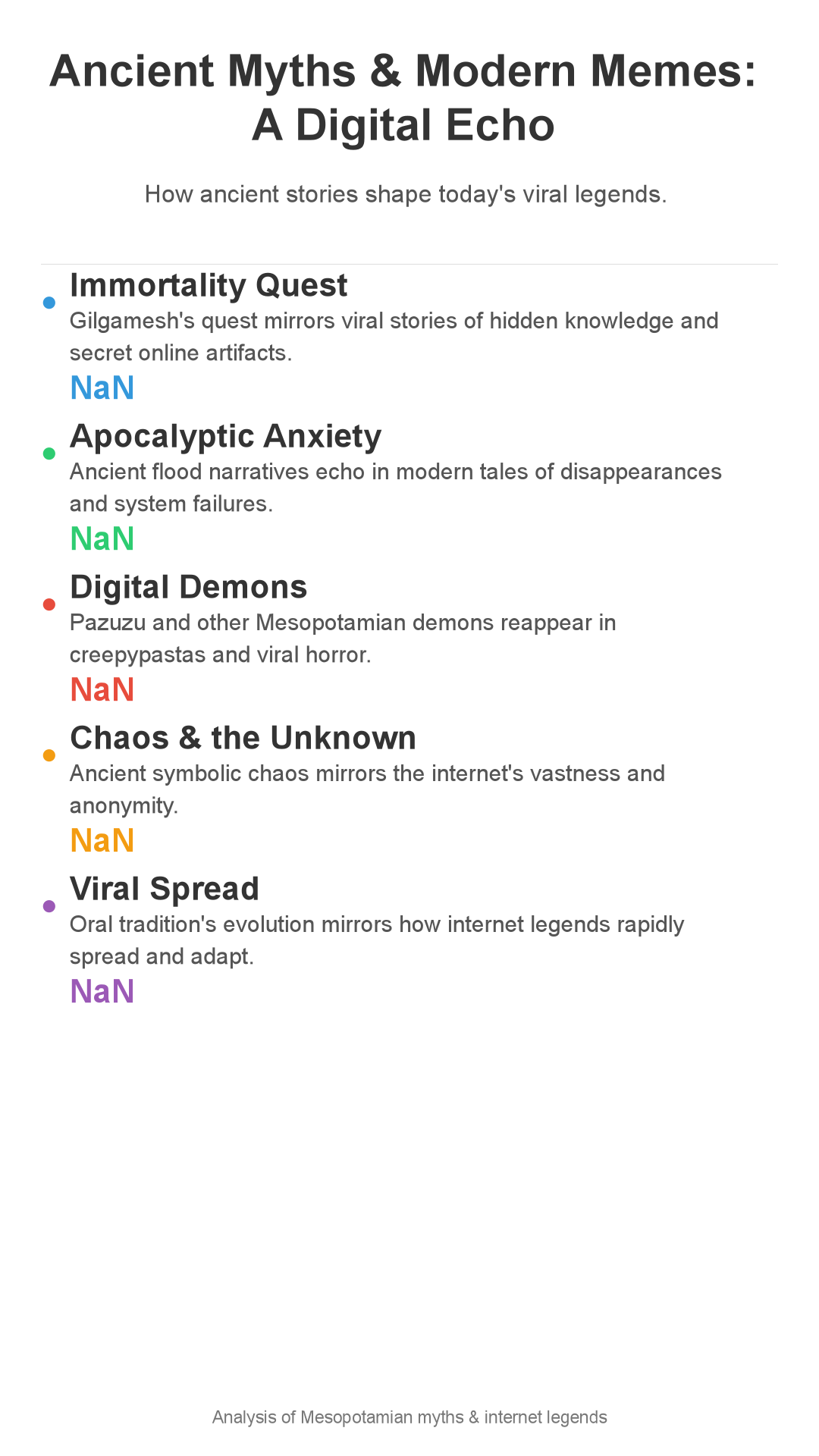
Ever wondered if those unsettling internet legends are echoes of ancient myths? This video explores
Ever encounter an internet legend so bizarre, so strangely familiar, it felt like you’d heard it before… etched on a Sumerian tablet? Prepare to explore the uncanny connections between ancient Mesopotamian myths and today’s viral sensations!
Internet sleuths, prepare to be amazed! We’re uncovering the surprising parallels between ancient Mesopotamian myths and the viral internet legends that captivate—and sometimes frighten—us.
The Epic of Gilgamesh and the “Missing 4chan Post” Phenomenon
Gilgamesh’s Quest for Immortality: Echoes in the Digital Age
The Epic of Gilgamesh, one of history’s oldest surviving works, details the king’s epic quest for immortality.
This relentless pursuit resonates deeply with modern internet narratives. Think of viral stories about hidden knowledge, secret online artifacts, or the legendary “missing 4chan post”—all promising enlightenment or a glimpse beyond the ordinary.
These narratives tap into the same primal desire for transcendence that drove Gilgamesh’s journey.
The Great Flood: A Recurring Theme of Apocalyptic Anxiety
Gilgamesh’s flood narrative, mirrored in many cultures, finds a digital echo in viral tales of unexplained disappearances, apocalyptic events, or glitches in the Matrix.
The fear of cataclysm, whether divine punishment or system failure, is a timeless human anxiety perfectly reflected in these modern online narratives.
These stories act as digital folklore, transmitting anxieties and warnings through our interconnected world.
Ancient Mesopotamian Monsters and Modern Creepypastas
Pazuzu and the Digital Demons of Our Time
Ancient Mesopotamian mythology is filled with terrifying demons and deities, like Pazuzu, the king of the wind demons.
His monstrous, winged image has seeped into our collective unconscious, resurfacing in modern creepypastas and viral horror.
The unsettling power of these ancient figures finds a new home in the internet’s shadowy corners, fueling our fascination with the grotesque and unknown.
Chaos and the Unknown: From Clay Tablets to Computer Screens
The symbolic chaos and unknown in ancient Mesopotamian art—swirling patterns, monstrous forms—uncannily mirror the unsettling ambiguity of many internet legends.
The internet’s vastness and anonymity embody a similar sense of the unknown, a digital wilderness where anything can happen, and unsettling stories thrive.
The Power of Oral Tradition and Viral Spread
From Storytelling to Social Media: A Tale as Old as Time
Ancient Mesopotamian myths were passed down orally, constantly evolving with each retelling.
This mirrors the rapid spread of internet legends through social media and online communities.
Embellishment and Adaptation: The Life Cycle of a Legend
Consider how a simple anecdote can morph into a fully-fledged legend on social media in days.
This process—the accretion of details, the added emotional weight, the layering of interpretations—strikingly resembles how ancient myths evolved over centuries.
Archetypes and Universal Themes
Heroes, Villains, and Tricksters: Timeless Characters
The archetypes in ancient Mesopotamian myths—the heroic king, the cunning trickster, the malevolent demon—resonate in modern internet legends.
We see these characters in viral stories, albeit updated.
Universal Themes: Fear, Power, and Meaning
Underlying both ancient myths and modern internet legends are universal themes transcending time and culture.
The fear of the unknown, the desire for power, the search for meaning—these fundamental human experiences are reflected in both.
So, what do you think? Are our modern digital legends simply re-imaginings of ancient anxieties, or is something more profound at play? Let’s discuss in the comments! And don’t forget to like and follow for more explorations into the weird and wonderful world of internet culture!

Enjoyed this? Check out our YouTube channel for video versions!
Enjoyed this? Check out our YouTube channel for video versions!



